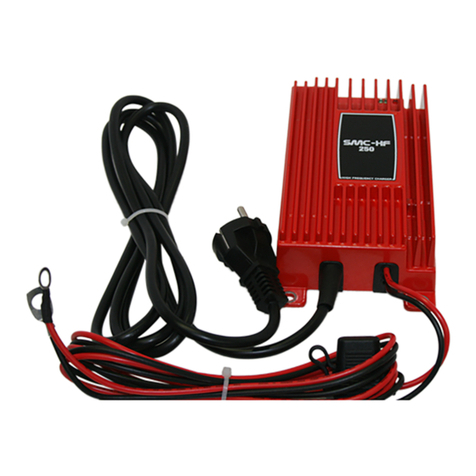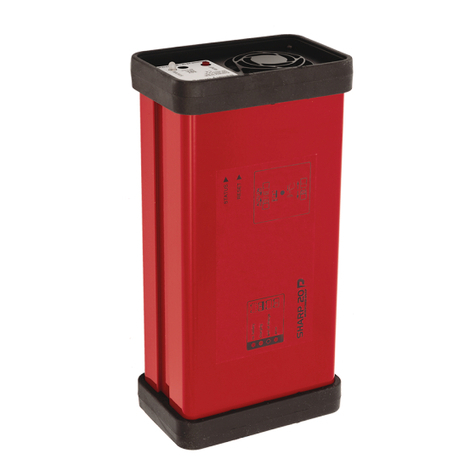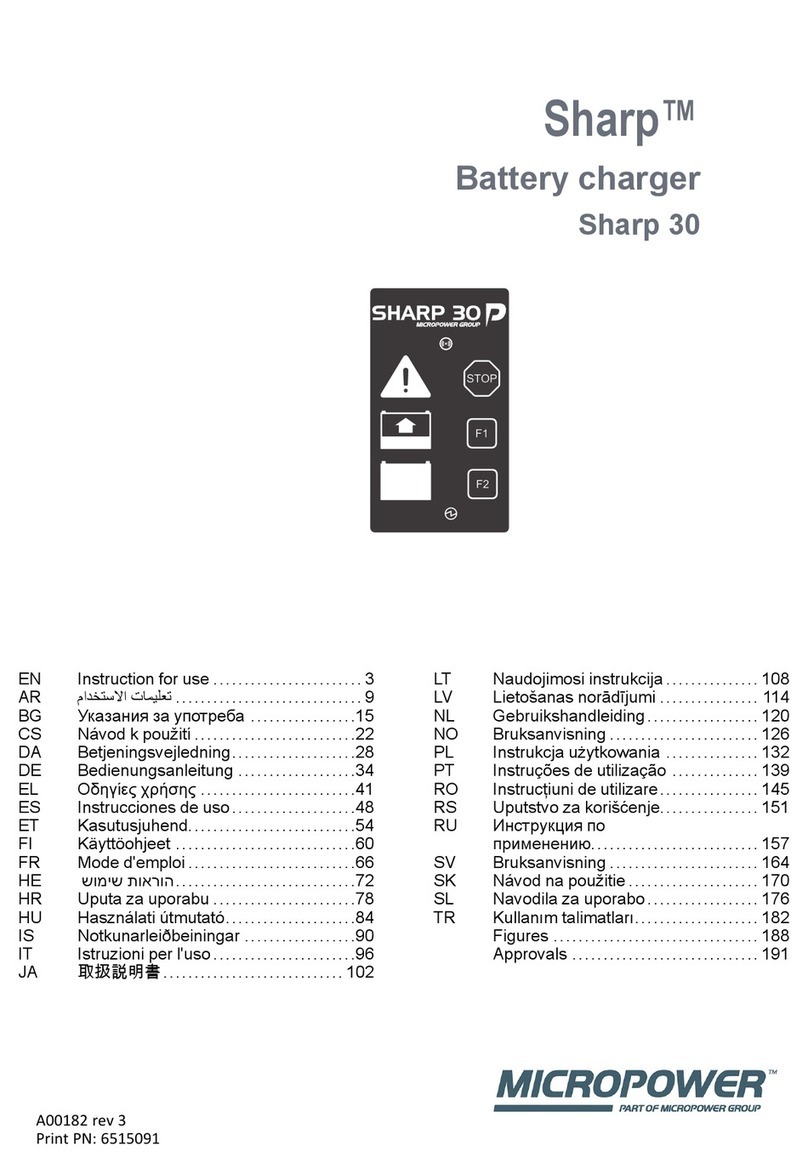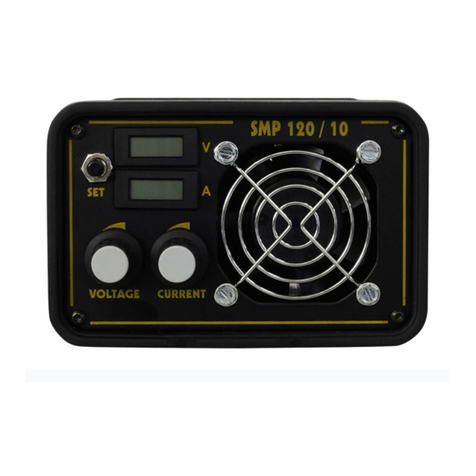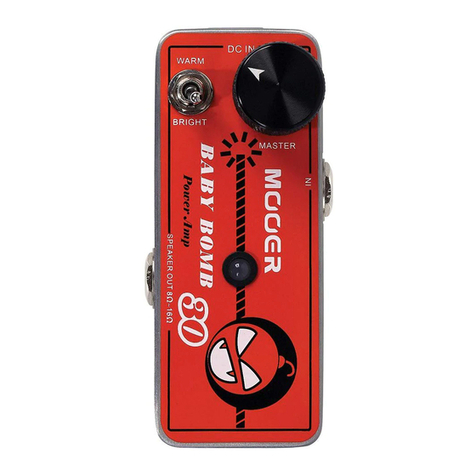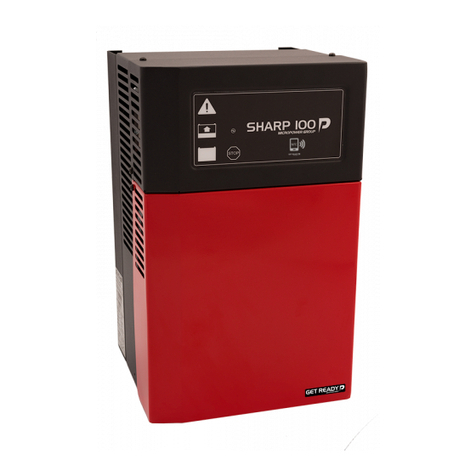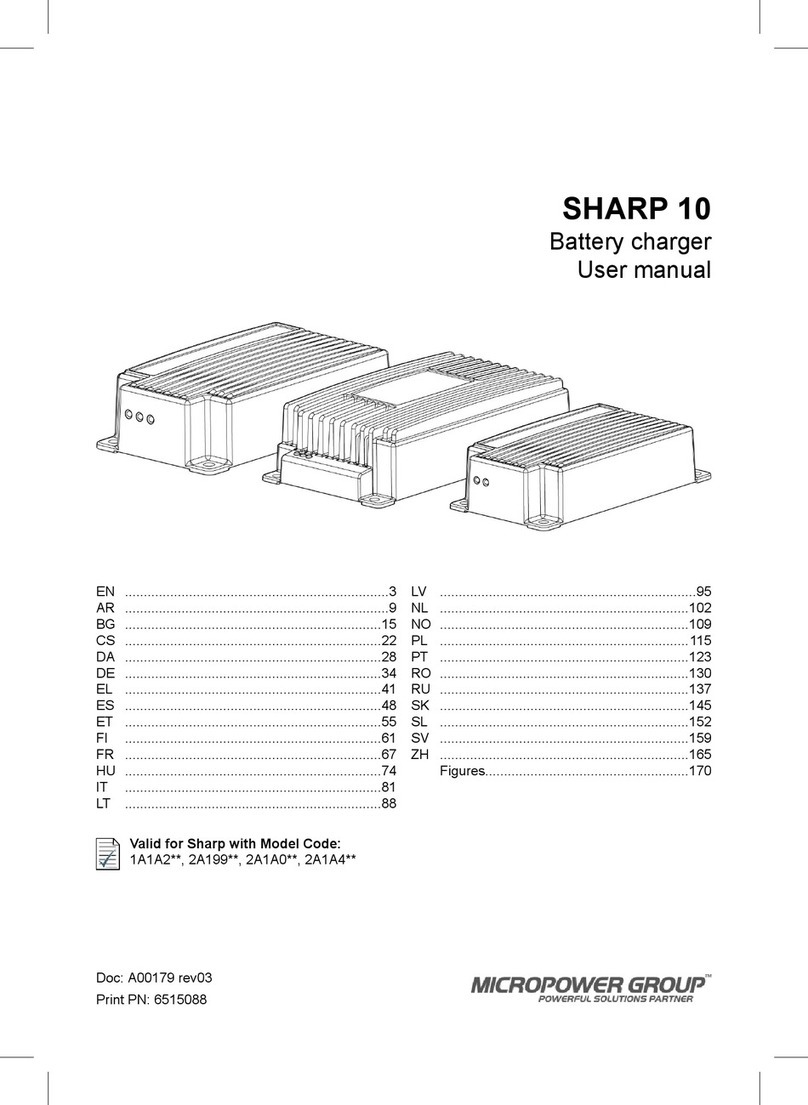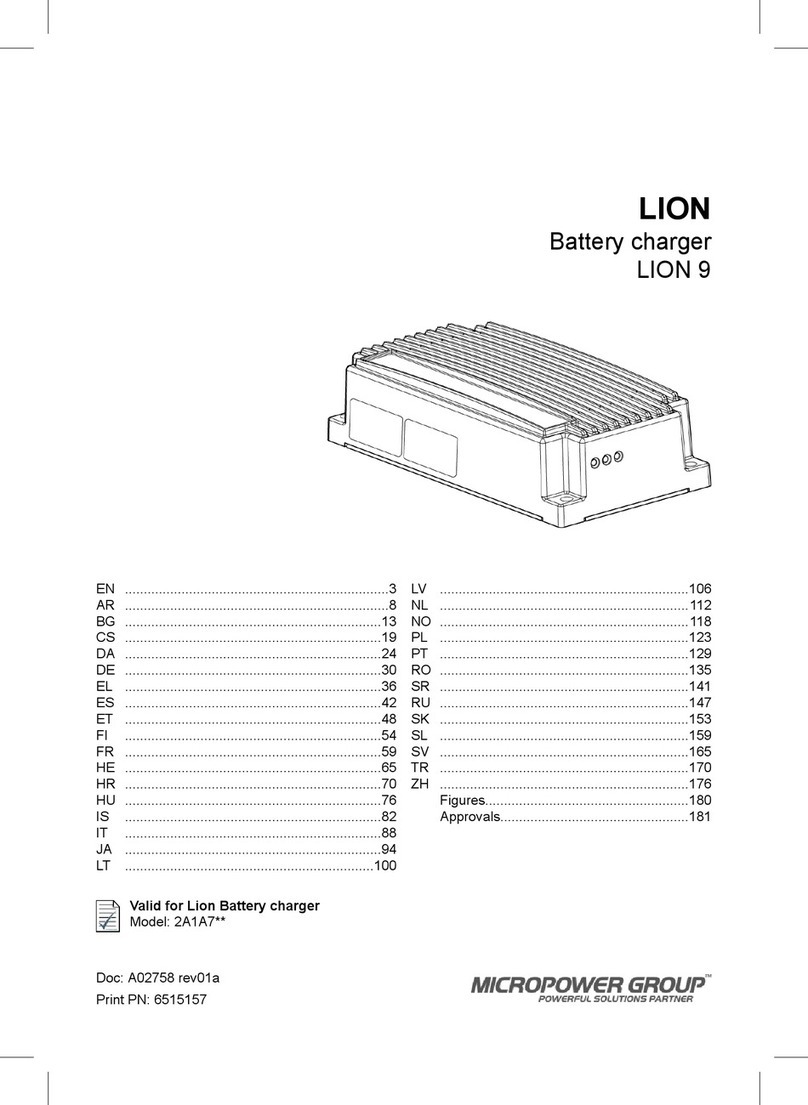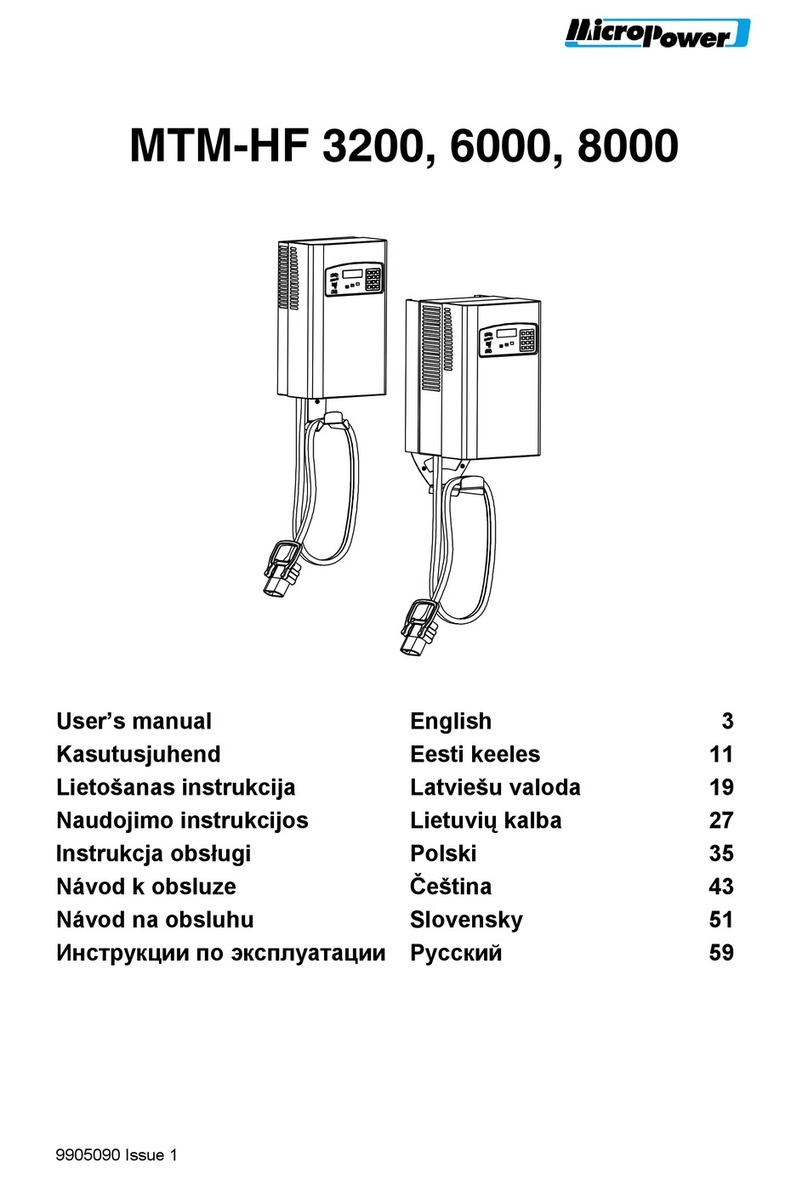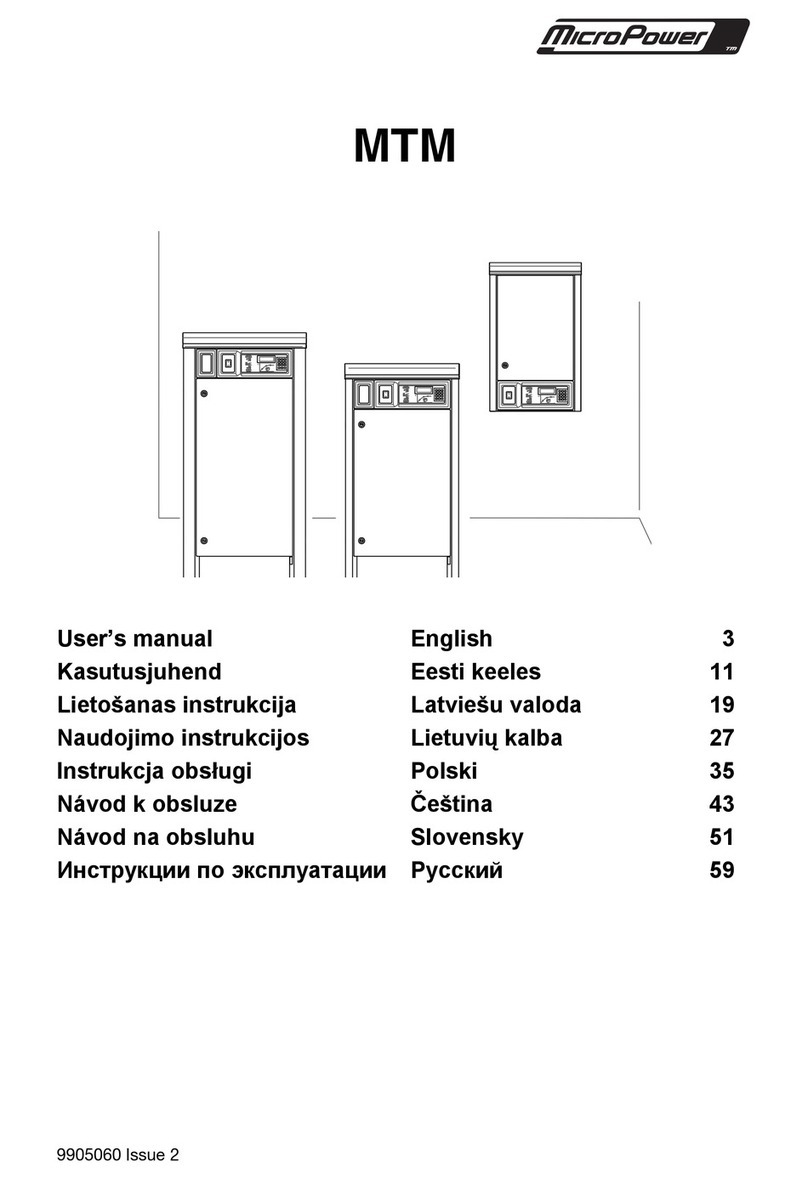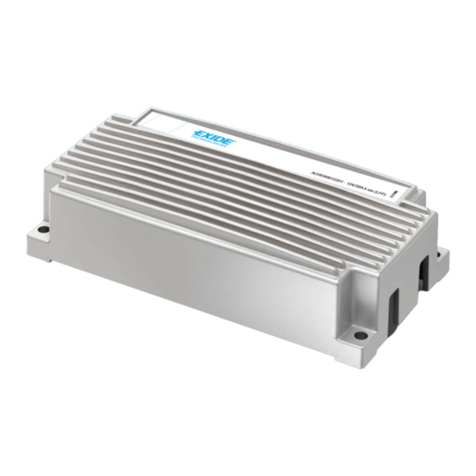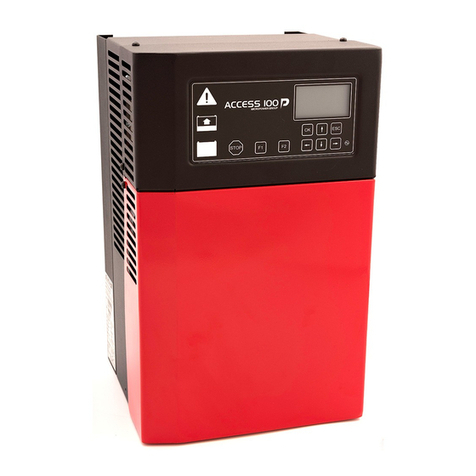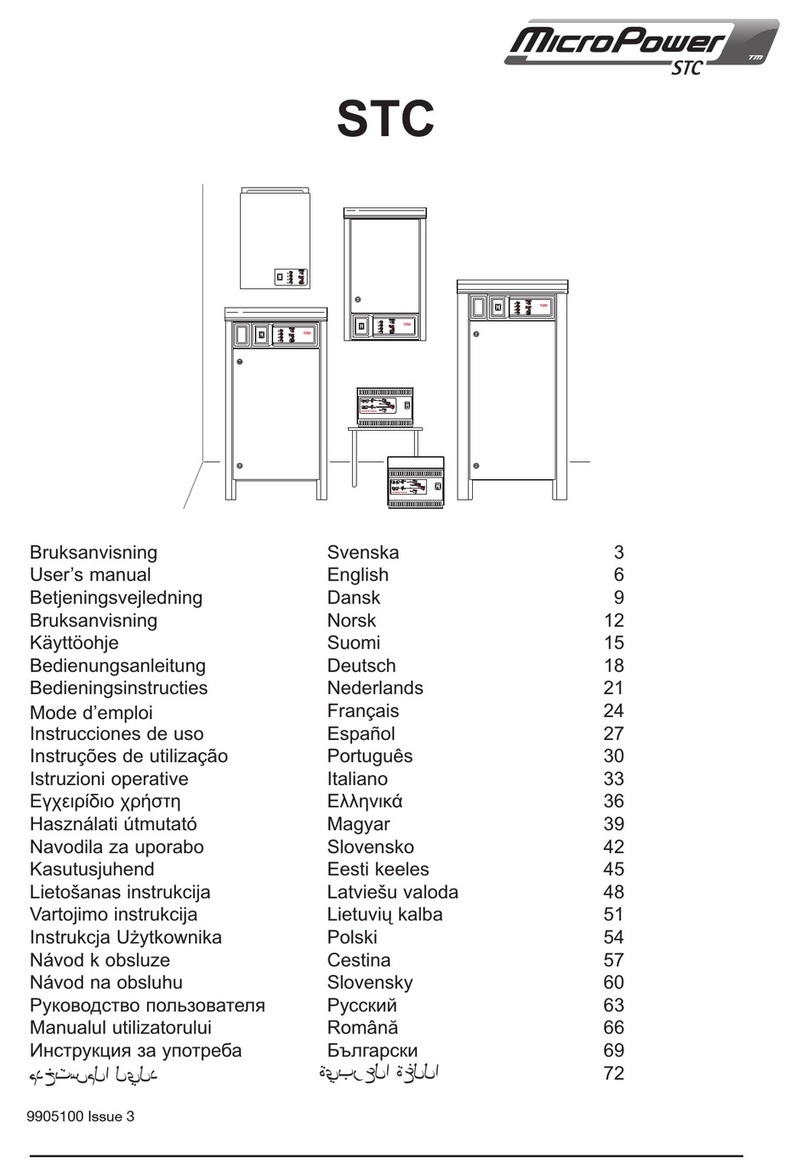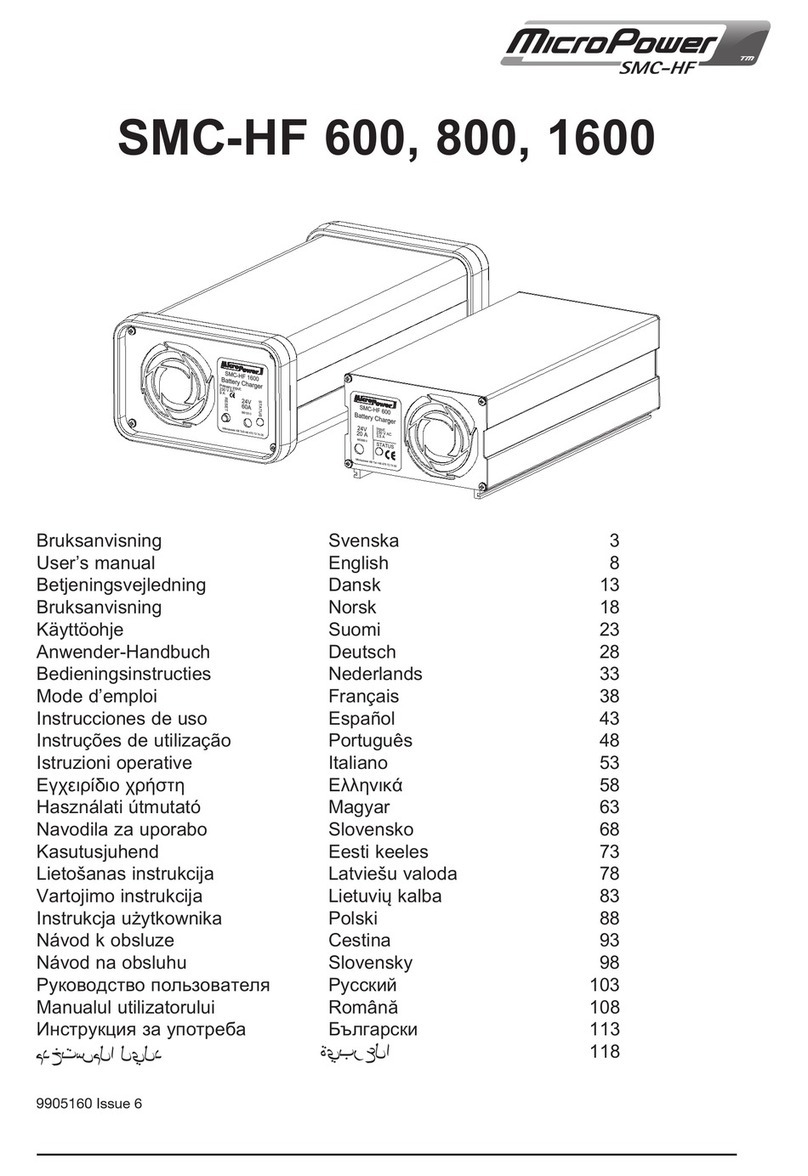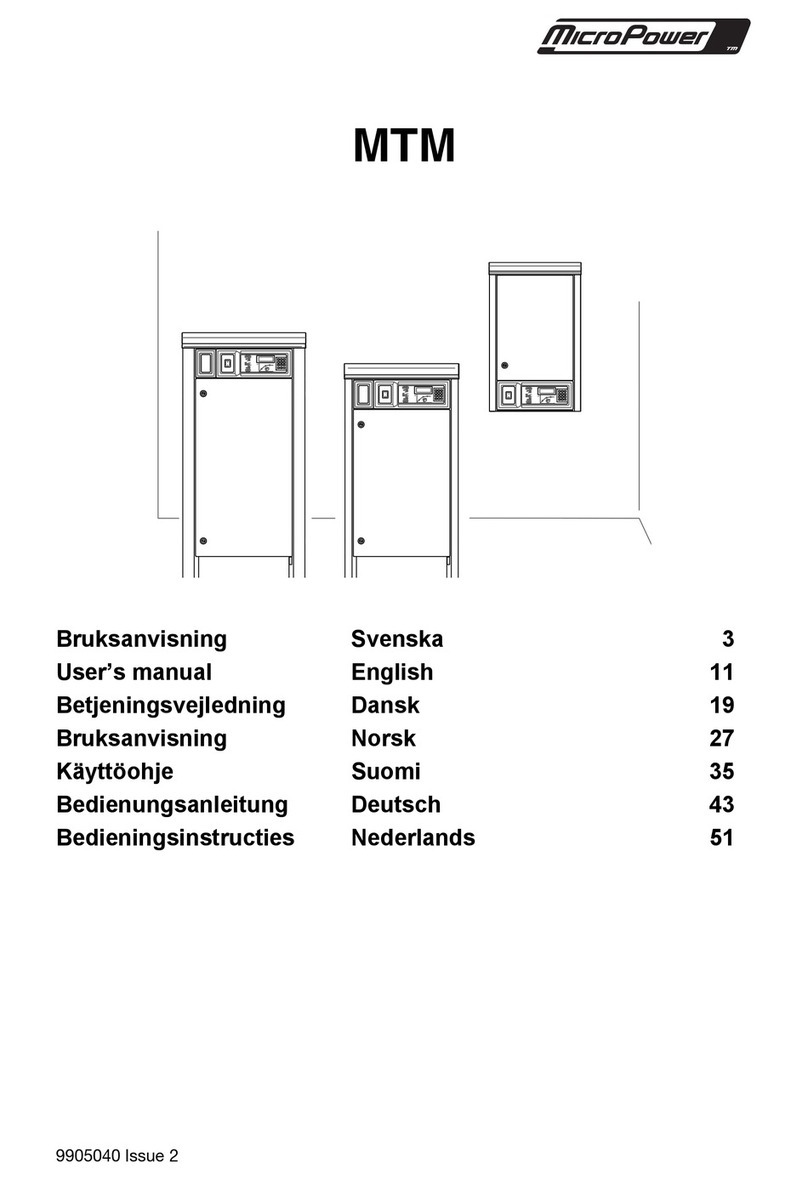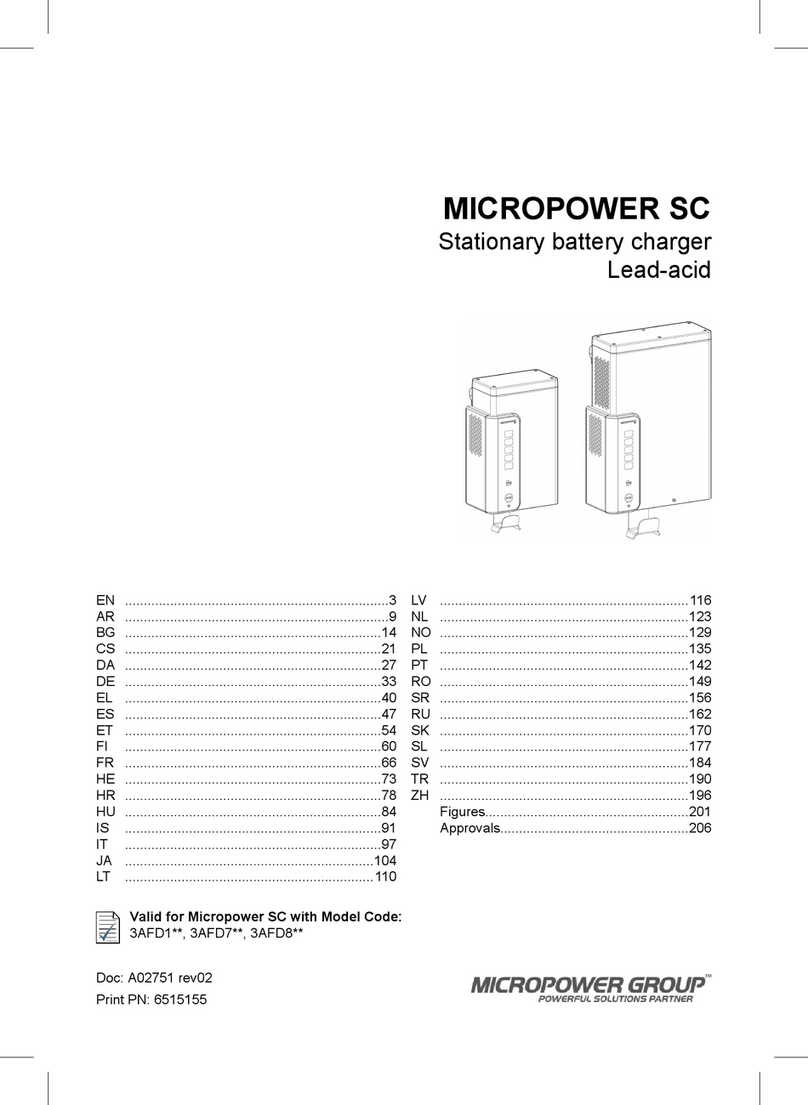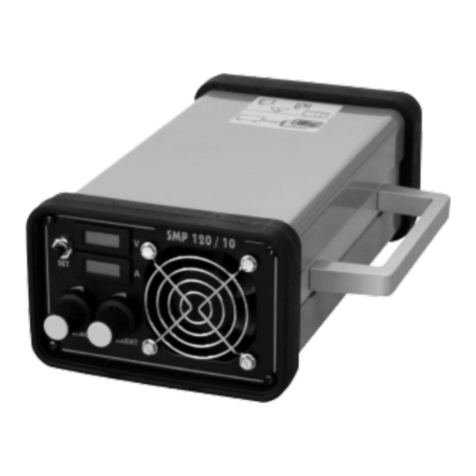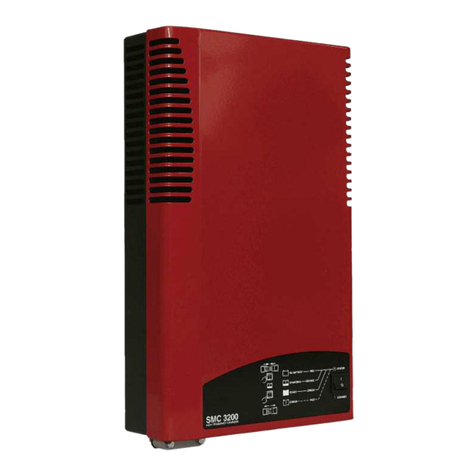ANVÄNDARANVISNING
•Läs denna anvisning innan laddaren tas i bruk
•Batteriladdning skall ske i ventilerat utrymme
•Vid laddning, anslut först pluskablaget till batteriet, sen minuskablaget till chassit. Därefter ansluts
laddaren till 230VAC
•Efter laddning, koppla först bort laddaren från vägguttaget. Därefter kopplas minuskablaget bort från
chassit och sedan pluskablaget från batteriet
•Nätkabeln kan inte bytas. Om kabeln gått sönder skall laddaren skrotas
•Vid laddning av batterier bildas det vätgas, som kan orsaka explosion
•Öppen eld eller gnistor får inte förekomma i närheten av batteriet
•Stäng alltid av laddaren innan batteriet till- eller frånkopplas
* Klipp inte av minuskablaget utan att göra åtgärden som nämns på sida 14!
Generellt
chAmp laddaren är avsedd för både fritt ventilerade- och ventilreglerade- blysyrabatterier.
Laddaren är liten och kompakt och kan därför ofta monteras i direkt anslutning till batteriet i den aktuella maskinen.
Laddaren, som arbetar med avancerad switch-teknik, ansluts till ett vanligt jordat uttag, den inbyggda
mikrocontrollern styr sedan laddningen enligt en programmerad laddningskurva.
Under laddningen visas laddningsförloppet med en statusindikering, lysdiod, på laddarens panel.
Mikrocontrollern övervakar också laddningen med avseende på laddningstid och temperatur i laddaren för att kunna
begränsa laddningen t.ex. vid fel på celler eller vid otillräcklig avkylning av laddaren.
Installation
chAmp laddaren är avsedd för såväl inomhus som utomhusbruk. Den kan användas liggande på bord, upphängd på
vägg, eller inbyggd i aktuell maskin. Batteriet kan efter vara fast anslutet eller bortkopplingsbart. Placera laddaren så
att lufttillförsel inte blockeras, för att bibehålla uteffekten. Vid väggmontering och inbyggnad bör laddaren placeras
vertikalt för att säkerställa en god konvektion/kylning. Batteriladdaren uppnår en temperatur över +41Counder drift
och ska därför vid montering i hjälpmedelsfordon/rullstol monteras beröringsfri eller förses med beröringsskydd.
Funktion
Välj batterityp eller power-supply läge med ”mode” knappen. Uppladdning startar efter några sekunder och
statusindikeringen, gul lysdiod, tänds. Laddaren startar om med samma inställning om nätspänningen bryts.
Laddningen och dess faser indikeras med LED stapeln. Vid avslutad laddningsfas går laddaren över i
underhållsladdning och kvarstår i denna fas tills nätet kopplas ifrån, underhållsladdnings indikeras med Grön diod.
När endast Grön lysdiod är tänd är batteriet klart att användas. Underhållsladdning sker så länge batteriet är
anslutet. Röd lysdiod tänds vid fel. Omstart av laddaren sker genom att bryta och sluta nätinkopplingen eller att
batteriet kopplas ifrån och ansluts igen. Batteriladdaren har temperatursensor för kompensering av
laddningsförloppet. Temperaturgivare finns monterad i minus kabelskon. Hela laddningsförloppet sker därför med
kompensation till omgivningstemperatur.
Power supply mode ger en utspänning på 13,7V resp. 27,5V.
